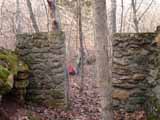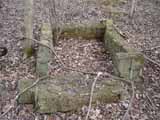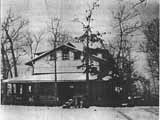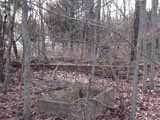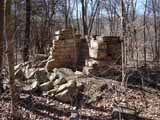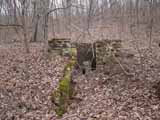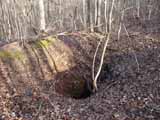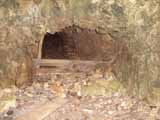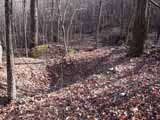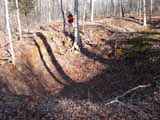Between 2005 and 2008, Weaver & Associates conducted nearly a dozen projects under contract with the United States Forest Service-Mark Twain National Forest. Most of these projects were Phase I surveys conducted in advance of control burns and timber sales. Weaver & Associates staff surveyed more than 25,000 acres during the course of these projects, recording and revisiting more than 500 archaeological sites and historic features.
The largest of these surveys was the Palmer Project and was located in Crawford and Washington counties, Missouri. Between January and April 2006, Weaver staff surveyed 5,798 acres of National Forest land, identified 33 new archaeological sites, revisited 57 previously recorded archaeological sites, and recorded 60 historic features.
Although the Palmer project was located in a region of relatively remote and steep terrain, it was one of the first areas within the Missouri Ozarks to be occupied by early American settlers. The nearby town of Potosi was settled in the late 1700s following discovery of rich lead deposits, and small communities soon sprang up near mineral resources and along perennial streams. The greatest boon to settlement was the United States’ acquisition of the Louisiana Territory in 1803, which effectively opened the area to American pioneers and entrepreneurs.
Numerous ethnic groups settled in the Missouri Ozarks, particularly in the time preceding the Civil War. French, Scotch-Irish, and German settlers all brought different cultural traditions with them, and they frequently formed their own small communities. Of particular interest to researchers are the ways these communities differed and changed over time as new generations adapted to the often difficult living conditions of the Ozarks.
The population of the region continued to grow until the Great Depression, when much of the area was abandoned. The economic fallout, coupled with widespread depletion of natural resources, made already difficult living conditions unbearable. Much of the land became tax-delinquent as families sought better conditions elsewhere. The Mark Twain National Forest, which was founded in 1939, was formed largely through the acquisition of the tax delinquent land. Today, the remains of the many farmsteads and homesteads that once dotted the landscape are hidden away within the recovering forest.
Before beginning fieldwork, Weaver & Associates staff conducted an extensive investigation of available literature, USFS site files, and historical maps in order to formulate a cultural context for the project area. Early maps of the area were especially beneficial in determining areas with known or likely settlements; these site leads were in turn given extra consideration during the actual field survey.
The large size of the project area allowed researchers to gather detailed data concerning the structure and settlement patterns of the many small communities that once existed there. It also allowed researchers to compare and contrast the ways these communities organized themselves. Of particular interest was the Palmer community—a ghost town founded in the early 1800s and abandoned during the mid-twentieth century after the Palmer Lead Company ceased mining the area. Weaver & Associates staff mapped more than 100 structural features within the community, including foundations, cisterns, wells, rock walls, and spring houses.
Prehistoric groups also made use of Interior Ozarks. Hunting and gathering parties made frequent forays into the region to take advantage of its rich and varied fauna and flora, and natural resources such as chert (used to make stone tools) were collected and likely traded into neighboring regions. Weaver & Associates researchers identified and recorded several prehistoric site types during the Palmer project, including rockshelters and logistical base camps. Pottery sherds, spear points, and arrowheads collected during the investigation helped to date the prehistoric sites and indicated that populations were active in the area throughout the Archaic, Woodland, and Mississippian periods.
The Palmer survey, together with the numerous other cultural resource surveys conducted by Weaver & Associates within the Mark Twain National Forest, give a glimpse into the ways both prehistoric and historic settlement differed across the varied landscape of the Missouri Ozarks. They also enabled USFS management to design recreation areas, timber sales, and control burns in a way that minimized or eliminated disturbances to the area’s cultural resources.
Return to Project Index.


